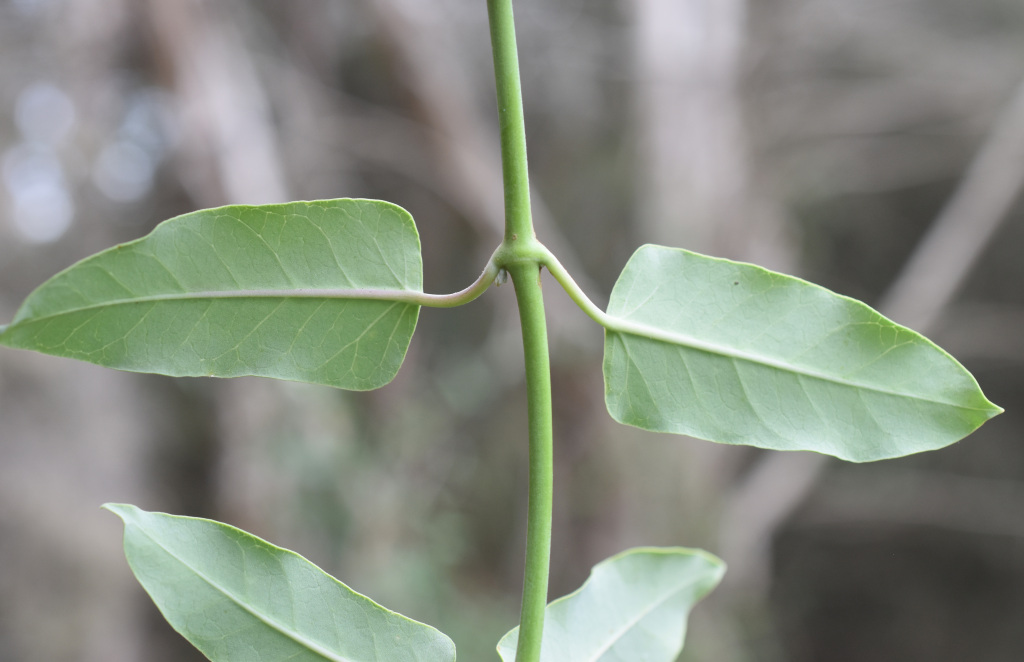Araujia sericifera
Brot. White Bladder-flowerClimber with stems to 5 m long; stems finely ribbed, white-pubescent when young, less so with age. Leaves ovate-oblong or subdeltoid, 3–11 cm long, 1.5–6 cm wide, apex acute to acuminate, mucronate, base truncate to shallowly cordate, margins inrolled, upper surface green with scattered appressed hairs, lower surface glaucous and minutely pubescent, midvein with 1–5 small glands at base of leaf; petiole 1–4 cm long. Inflorescences usually 2–5-flowered; peduncles mostly 5–15 mm long. Flowers on pedicels 5–15 mm long; sepals cordate, 8–13 mm long, free almost to base, glaucous; corolla-lobes ovate, c. 10 mm long, slightly shorter than tube, white, cream or pale pink. Follicles broad-ovoid, 6–10 cm long, 5–7 cm wide, ribbed, pale glaucous-green, soft and fleshy at first, becoming leathery with age; seeds 5–8 mm long, c. 5 mm wide, coma hairs c. 3 cm long. Flowers summer–autumn.
VVP, VRiv, GipP, OtP, EGL, HSF. Also naturalised WA, SA, Qld, NSW. Native to Brazil. A common weed of inner urban gardens in Melbourne. Naturalised in a few sites around Melbourne and at Shepparton.
The common name, Cruel Plant, refers to the syndrome by which butterflies or moths may be caught by their long probosci while seeking nectar, usually to be released later with the pollinium clipped onto the proboscis.
Jeanes, J.A. (1999). Asclepiadaceae. In: Walsh, N.G.; Entwisle, T.J., Flora of Victoria Vol. 4, Cornaceae to Asteraceae, pp. 325–332. Inkata Press, Melbourne.
 Spinning
Spinning



